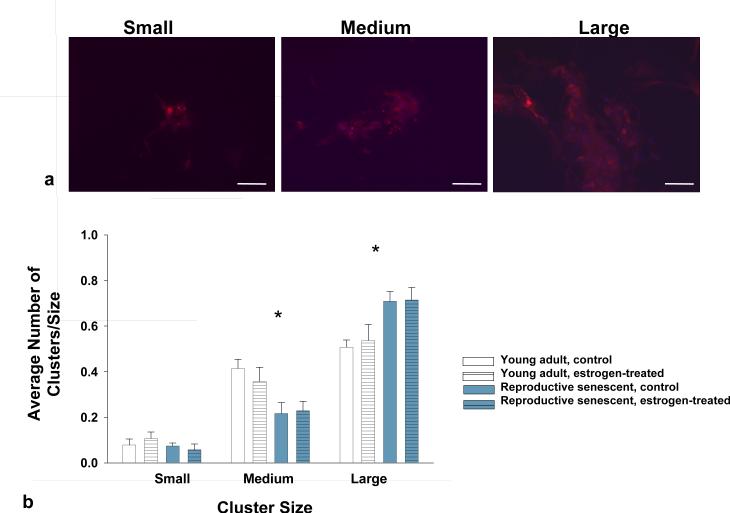FIG 4.
Neurosphere cluster size was used as a measure of putative neuronal maturity in NPCs co-cultured with young adult or reproductive senescent astrocytes (a). Small neurosphere clusters were defined as (a, far left) aggregates of NPCs consisting of 5-10 visible grouped nuclei, medium clusters (a, middle panel) as consisting of 11-20 visible grouped nuclei and large clusters (a, far right) as containing greater than 20 visible grouped nuclei. Cells were immunoreactive for MAP-2 (red, a) and counter-stained for the nuclear dye Hoechst 33258 (blue, a). The frequency of small cluster size did not differ between those cultured with young adult or reproductive senescent astrocytes (b). However, neurosphere aggregates co-cultured with young adult astrocytes had significantly more medium size clusters while reproductive senescent astrocyte co-cultures had predominantly large clusters (b). Bars represent mean ± SEM of a single representative experiment with n=5-6 for each treatment group. Statistical significance at p< 0.05 is indicated by (*). Bar: 50 μm.

